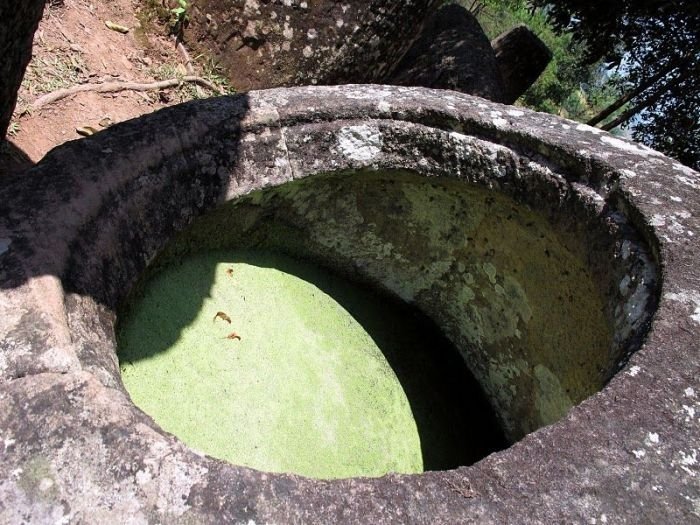|
|
The Plain Of Jars, Laos
|
The cave at Site 1 is a natural limestone cave with an opening to the northwest and two man-made holes at the top of the cave. These holes are interpreted as chimneys of the crematorium. The French geologist and amateur archaeologist Madeleine Colani excavated in side the cave in the early 1930 and found archaeological material to support a centralized crematorium theory. Colani also recorded and excavated at 12 Plain of Jar's sites and published two volumes with her findings in 1935.
The material findings and context led her to the interpretation of the Plain of Jars as an Iron Age burial site. Inside the jars, she found embedded in black organic soil coloured glass beads, burnt teeth and bone fragments, sometimes from more than one individual. Around the stone jars, she found human bone, pottery fragments, iron and bronze objects, glass and stone beads, ceramic weights and charcoal. The bone and teeth inside the stone jars show signs of cremation, while the burials surrounding the jars yield unburnt secondary burial bones.
No further archaeological research was conducted until November 1994 when Professor Eiji Nitta of the Kagoshima University in collaboration with Lao Archaeologist Thongsa Sayavongkhamdy surveyed and mapped Site 1. Nitta argues that the surrounding burial pits are contemporary to the stone jar as they are cut into the ancient surface on which the jar was placed. Nitta sees the stone jar as a symbolic monument to mark the surrounding burials.
He dates the Plain of Jars to the late first – early second millennium C.E. based on the burial urn and associated grave goods. Sayavongkhamdy undertook survey and excavation between 1994 and 1996 supported by the Australian National University. Sayavongkhamdy and Bellwood interpret the stone jars as a central single person's primary or secondary burial surrounded by secondary burials of family members. Archaeological data collected during UXO clearance operations supervised by UNESCO archaeologist Julie Van Den Bergh at the in 2004-2005 and again in 2007 provided similar archaeological material results. Van Den Bergh recorded similar to Nitta stratigraphical evidence that the stone jars and surrounding burials are contemporary .
|
|









